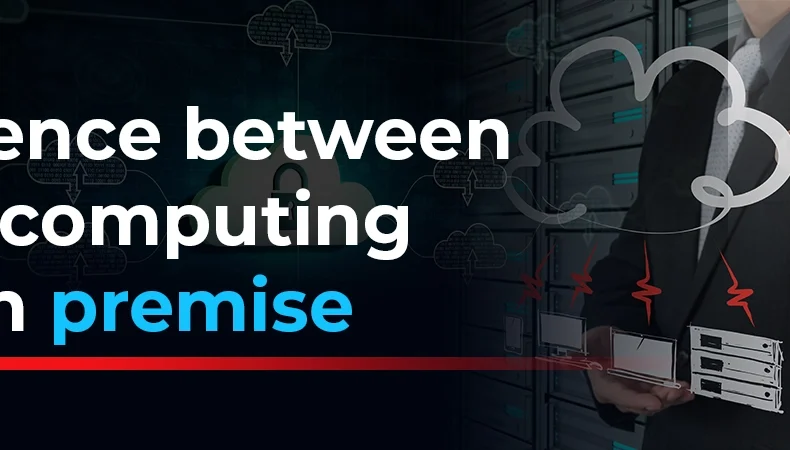Introduction:
In the realm of modern technology, businesses face critical decisions regarding their IT infrastructure. Two prominent options are cloud computing and on-premise computing, each with its own set of advantages and considerations. Understanding the differences between these two models is crucial for organizations seeking to optimize their operations and harness the power of technology effectively.
- Definition:
Cloud Computing: Cloud computing involves the delivery of computing services, including storage, processing power, and applications, over the internet. Instead of relying on local servers and infrastructure, businesses access and utilize resources hosted on remote servers provided by third-party service providers.
On-Premise Computing: On-premise computing, on the other hand, refers to the traditional model where an organization owns and manages its own physical servers and infrastructure. All hardware, software, and networking components are housed within the organization’s premises, giving it complete control and responsibility for maintenance.
- Cost Considerations:
Cloud Computing: One of the key benefits of cloud computing is its pay-as-you-go model. Organizations pay for the resources they use, allowing for cost scalability. There is no need for large upfront investments in hardware, and operational costs are more predictable.
On-Premise Computing: On-premise computing typically requires significant upfront investments in hardware, software licenses, and infrastructure. While there may be lower recurring costs over time, the initial capital expenditure can be a barrier for some businesses.
- Scalability:
Cloud Computing: Cloud services offer unparalleled scalability. Businesses can easily scale up or down based on their requirements. This flexibility is particularly advantageous for companies experiencing fluctuating workloads or rapid growth.
On-Premise Computing: Scalability in on-premise computing may be limited by the physical constraints of the infrastructure. Expansion requires purchasing additional hardware, which can be time-consuming and may lead to over-provisioning if not planned accurately.
- Maintenance and Updates:
Cloud Computing: Service providers handle the maintenance, updates, and security of the infrastructure in cloud computing. This allows businesses to focus on their core activities without the burden of managing hardware and software maintenance.
On-Premise Computing: In on-premise computing, organizations are responsible for all maintenance tasks, including hardware upgrades, software patches, and security measures. This requires a dedicated IT team and can be resource-intensive.
- Security:
Cloud Computing: Security concerns often arise in cloud computing, but reputable service providers implement robust security measures. Data is stored in secure data centers with multiple layers of protection, and providers adhere to industry standards and regulations.
On-Premise Computing: On-premise solutions provide organizations with direct control over their security measures. However, this control also means that the organization is solely responsible for implementing and maintaining security protocols.
Conclusion:
Difference between cloud computing and on-premise computing involves a careful consideration of an organization’s specific needs, budget constraints, and long-term goals. While cloud computing offers flexibility and cost efficiency, on-premise computing provides direct control and security. Ultimately, the decision should align with the unique requirements and strategic objectives of the business.
- Tags:
- education
- technology



